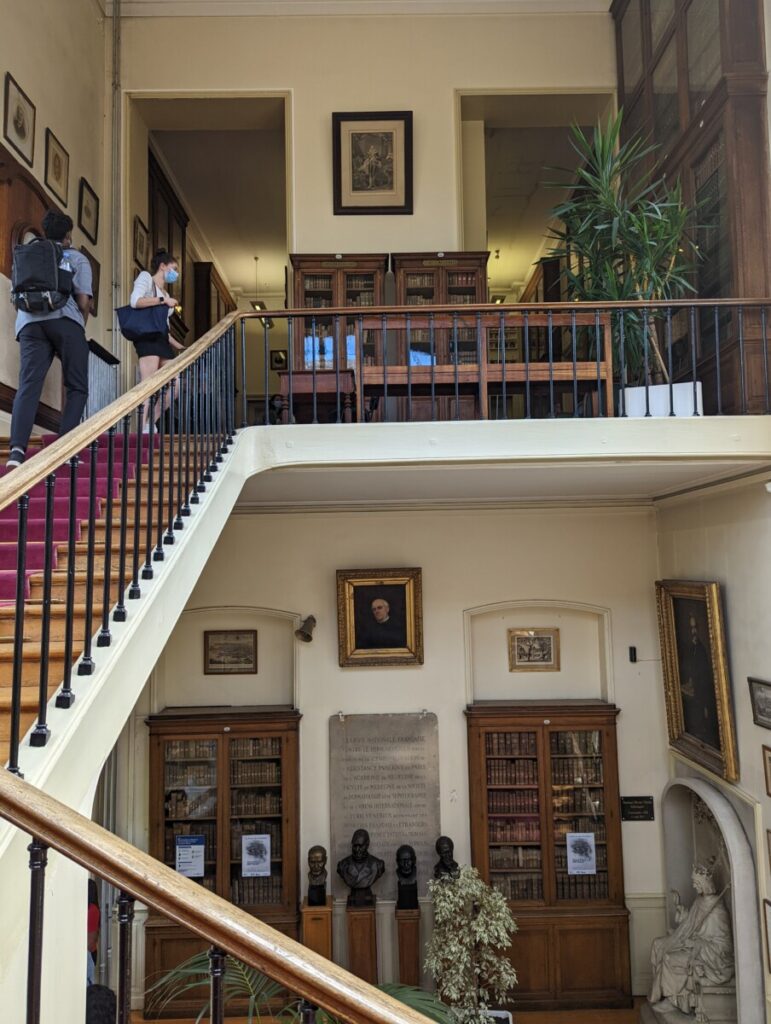By Duke McDaniels

After an incredibly drama-suffused tale of miscommunications and scheduling mishaps, we of the NBB Paris Study Abroad team finally managed to make it to a visit at the Musée des Moulages, a famous dermatology museum here in the aforementioned city of Paris. While I do admit to initially rolling my eyes a bit at the prospect of visiting such a place, especially after all the trouble it had taken to get there, I wasn’t expecting the experience to be particularly valuable. How wrong I was. Visiting that monument to skincare gone-awry gave me a priceless gift I could never have gotten anywhere else in the world at my age: the 100% certainty that I would never, EVER explore the realm of dermatology as long as I lived.
The museum was particularly secretive about its contents, given that it housed wax (or perhaps plaster, I wasn’t really sure) casts and models of various dermatological diseases and disorders. The fact that these models were so unique and intricate meant that pictures weren’t allowed to be taken within the museum’s main exhibit, and when I say that every person reading this should be praising the powers that be for this rule, I mean every word. I saw things more grotesque than the minds of the already deeply-disturbed creatives within the horror genre could hope to think of on their own. With every oozing sore, swollen appendage, and fungus-eaten slab of flesh we passed, I grew evermore thankful I had skipped both breakfast and lunch that day in favor of my other homework assignments.
The more intense my feelings of revulsion at the frailty of the human form and all its vulnerabilities grew, the more I became interested in the actual source of these feelings. Disgust is an emotion commonly thought to be a response evolved to promote the avoidance of disease (Davey, 2011), a theory which makes sense given the environment which was evoking that emotion. Evidence for this evolutionary basis includes the cross-cultural facial expression associated with the emotion (i.e. wrinkled nose & downturned mouth), feelings of nausea, and avoidance of the object of disgust accompanied by a fear of being contaminated by it (Davey, 2011). The case study of myself checked all of the boxes, and in my mind, lended some more credibility to this theory. The fact that dermatologists can put themselves into such environments while thinking of nothing but aiding the afflicted person is truly admirable. It is not, however, a mindset I can share for the moment.

Davey, G. C. (2011). Disgust: The disease-avoidance emotion and its dysfunctions. Philosophical Transactions of the Royal Society B: Biological Sciences, 366(1583), 3453–3465. https://doi.org/10.1098/rstb.2011.0039
